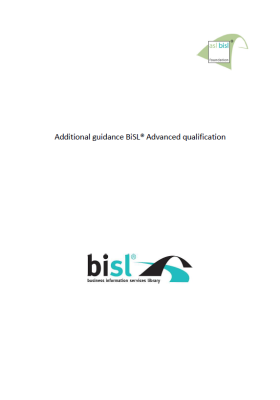The Business Information Services Library (BiSL) was launched into the public domain as a library for business information management. The library consists of publications describing the process framework for business information management and a large number of best practices, white papers, articles and presentations.
BiSL provides guidance on how to adopt a professional and systematic approach to the management of business information, a comprehensive process framework for business information management. It is supported by a growing number of best practices. Through the publication of the framework and numerous publications and the establishment of a foundation to maintain it, BiSL has become part of the public domain. One of the most important benefits of the framework is that a common language and terms of reference are provided to the market.
While IT ensures that information is stored, processed and readily available, effective business information management ensures that an organization is able to respond to specific business demands, and to actually realize the value from their investments.







